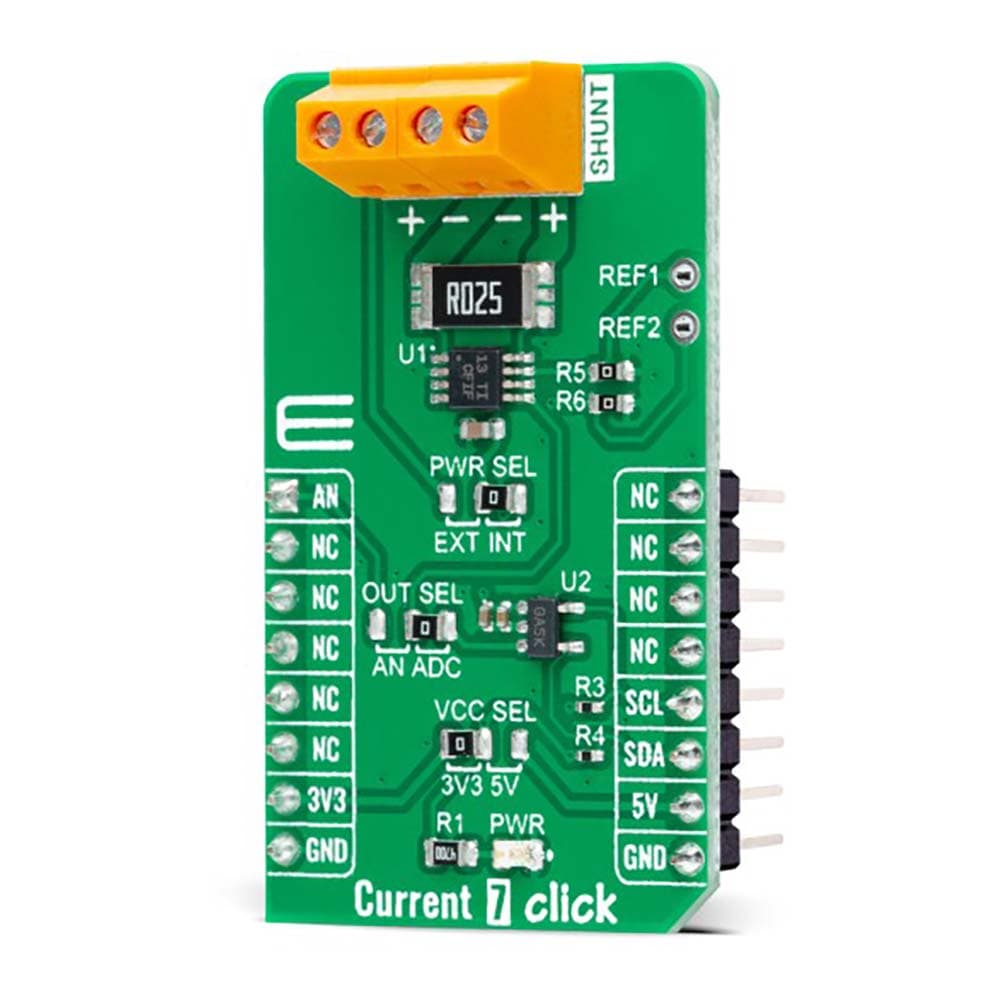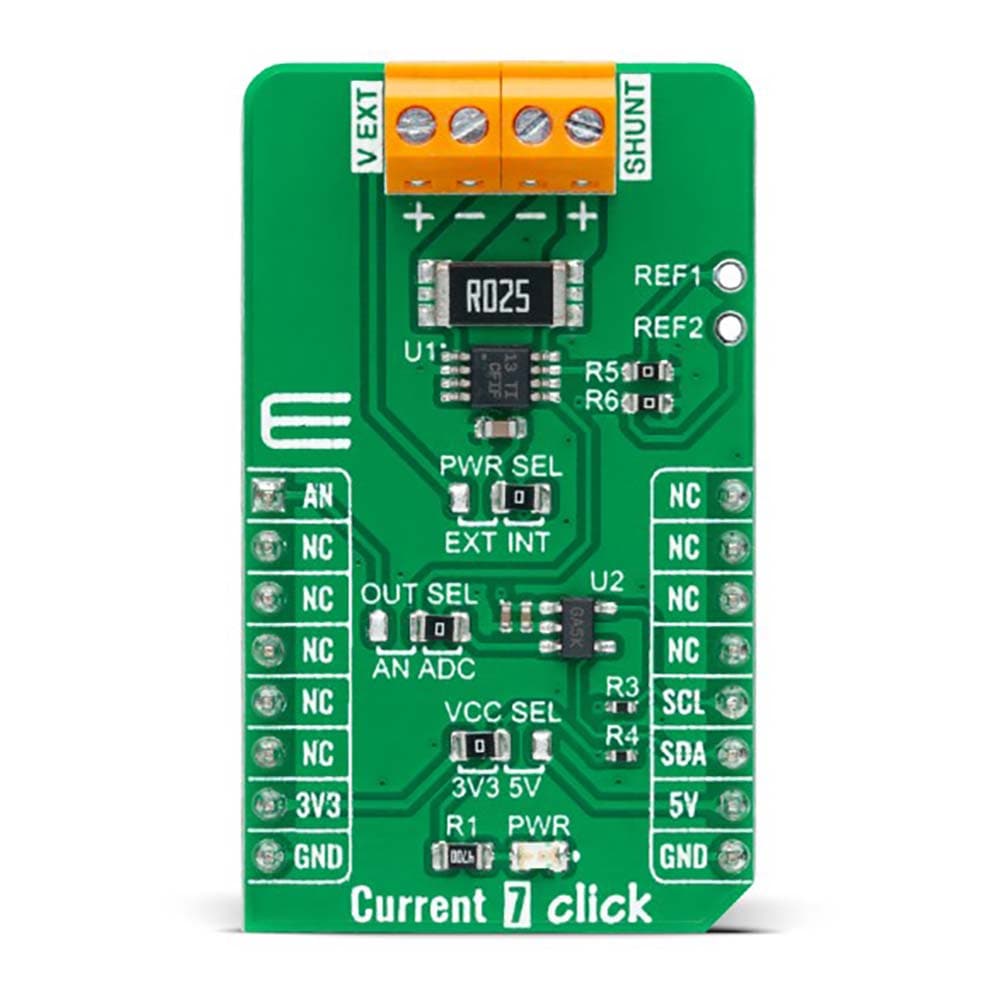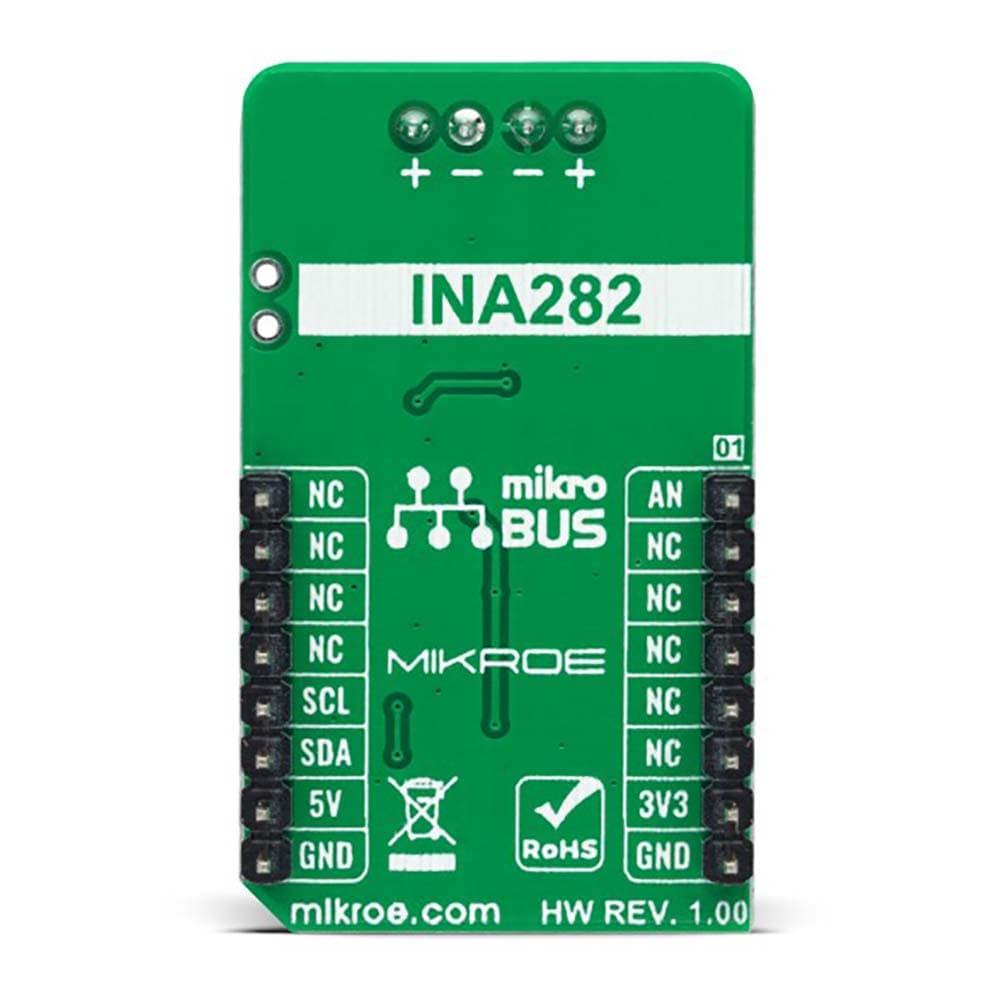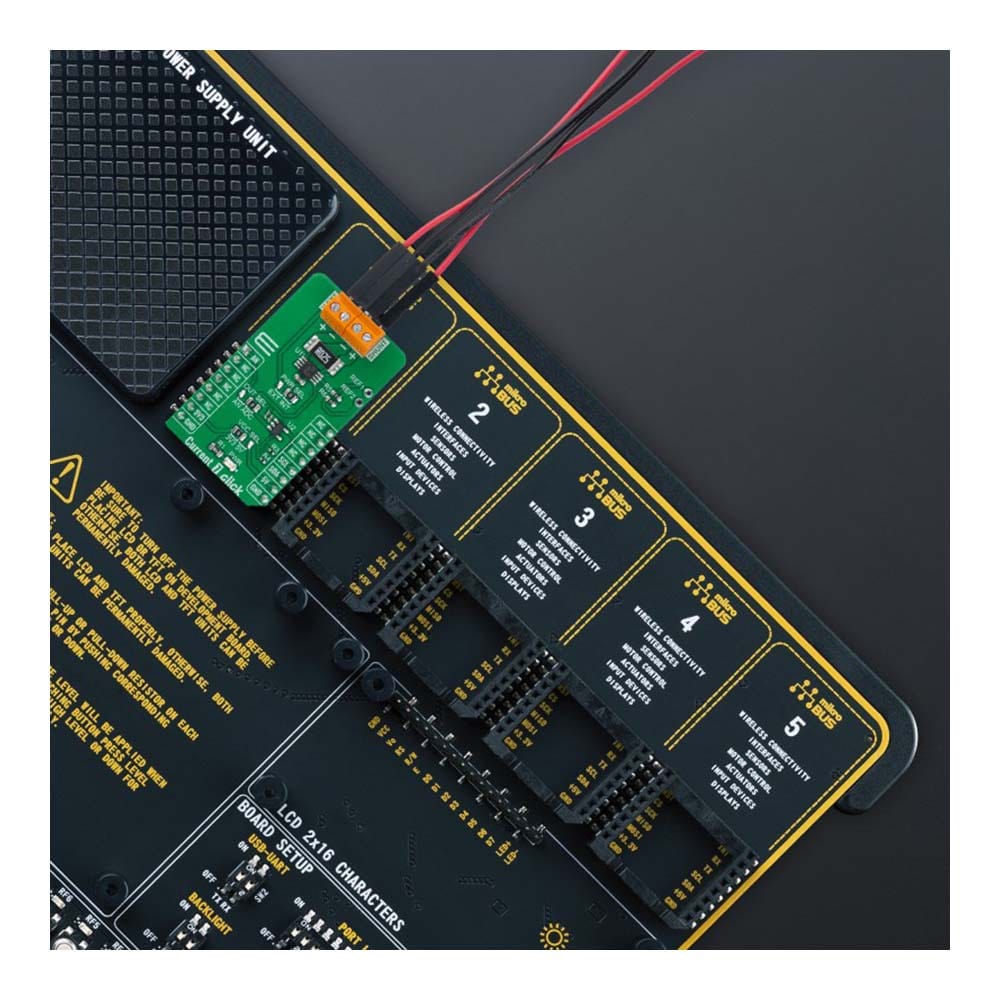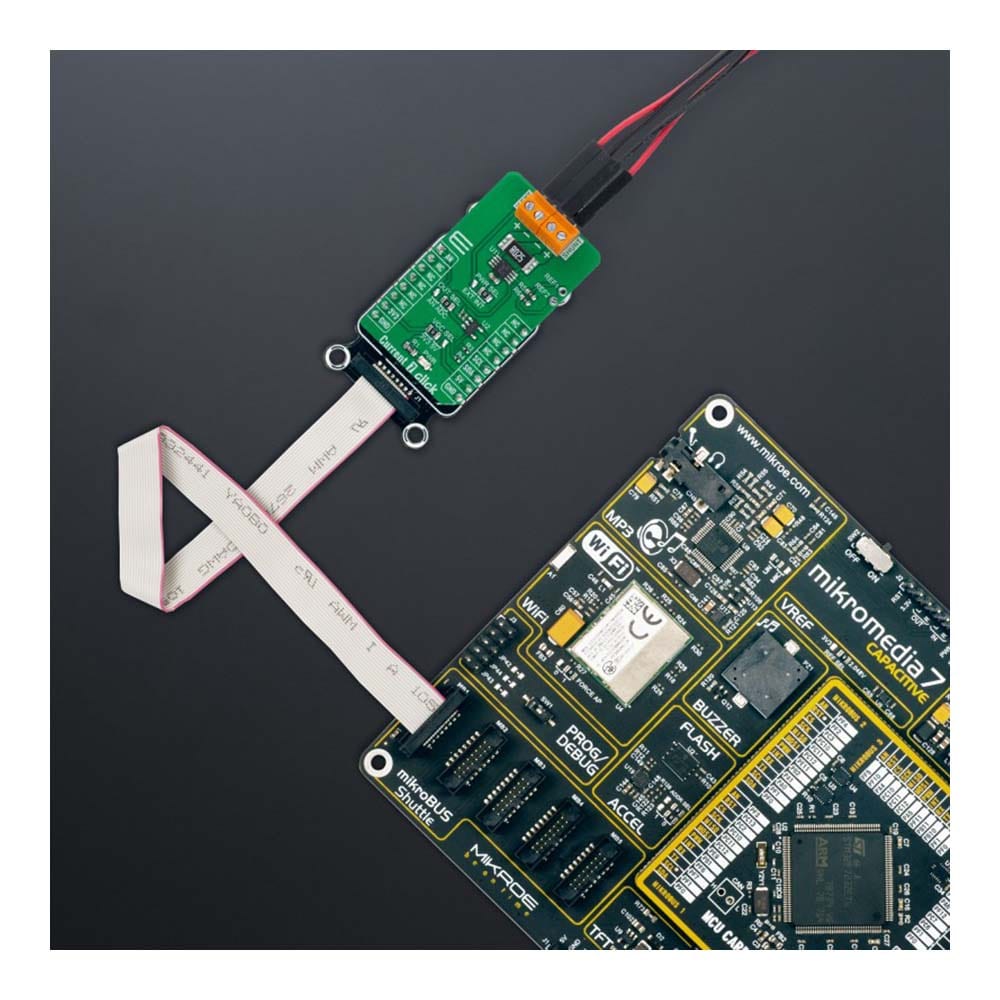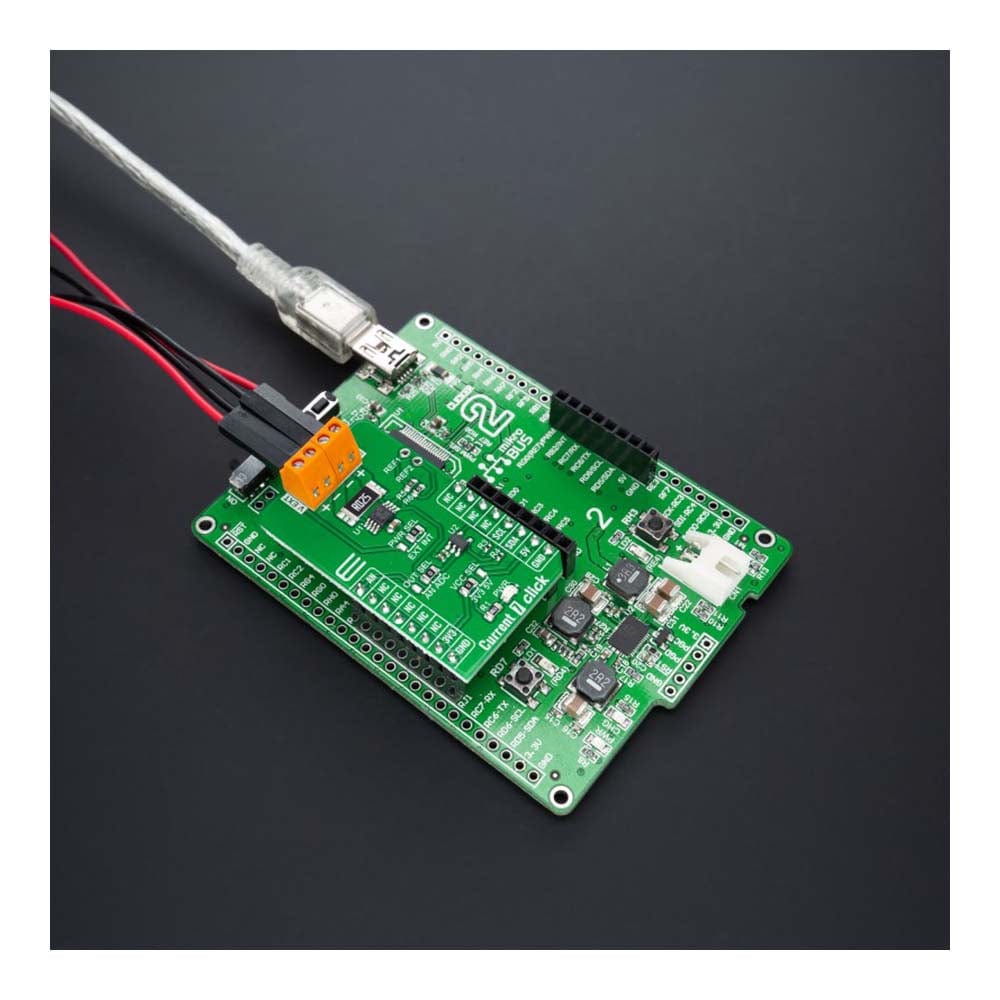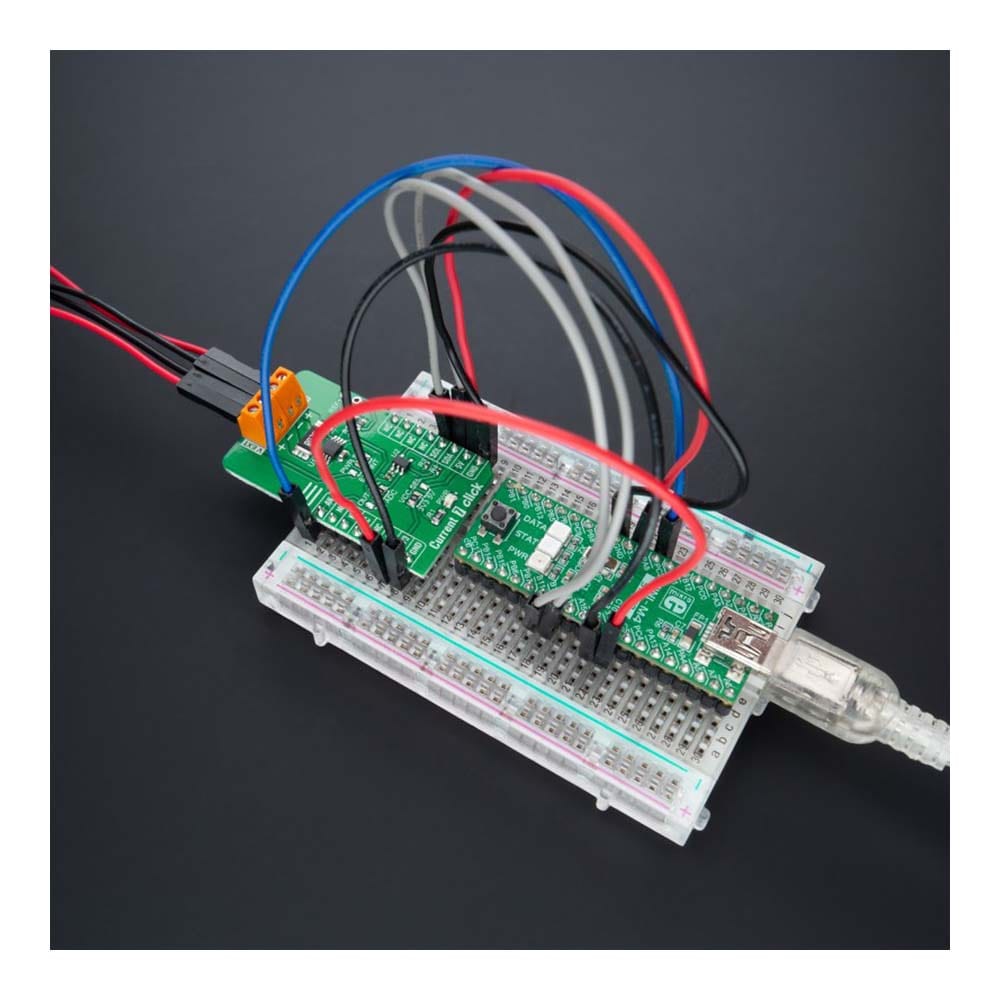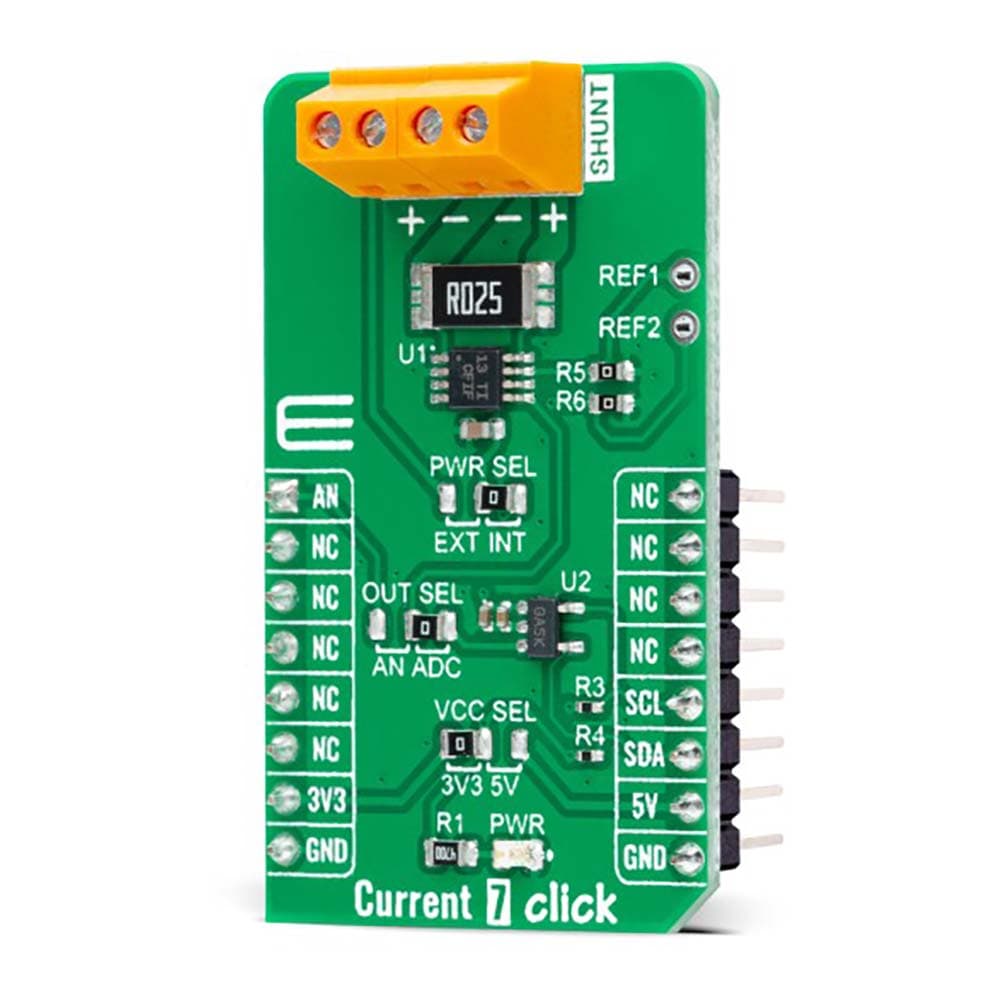
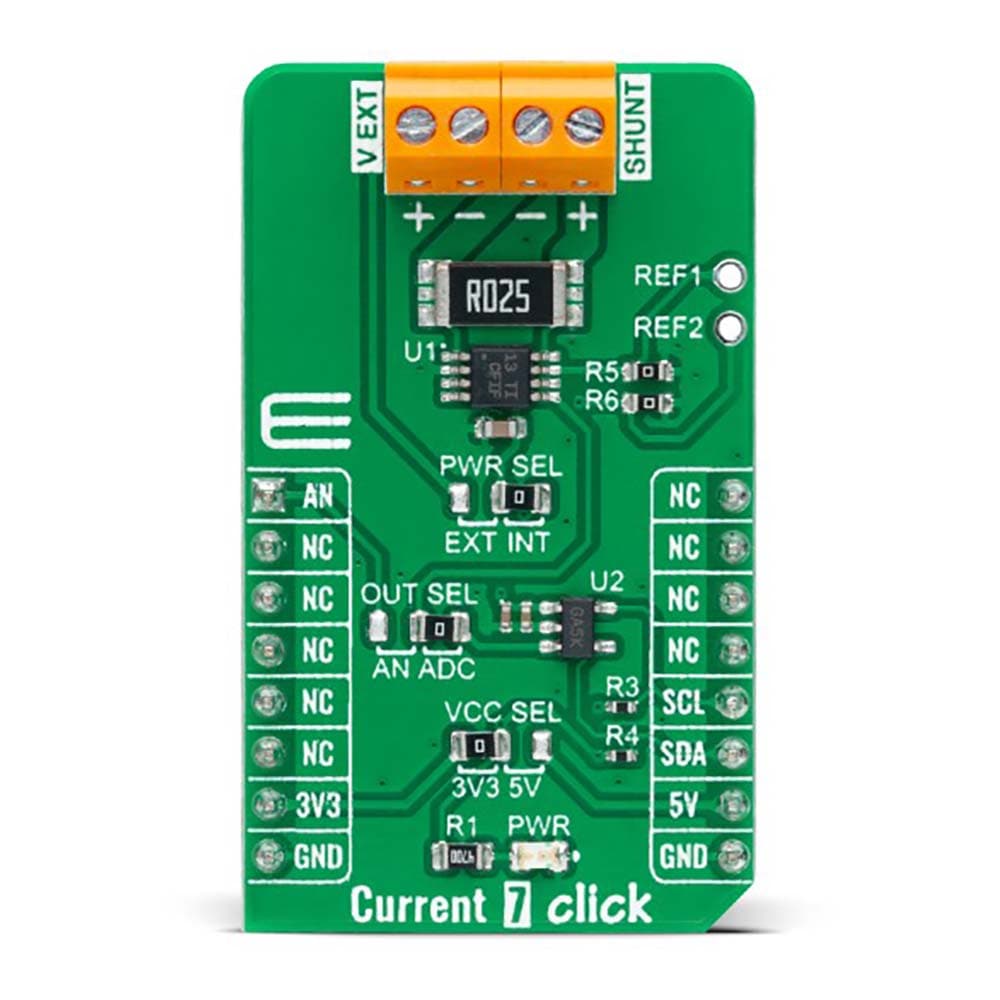

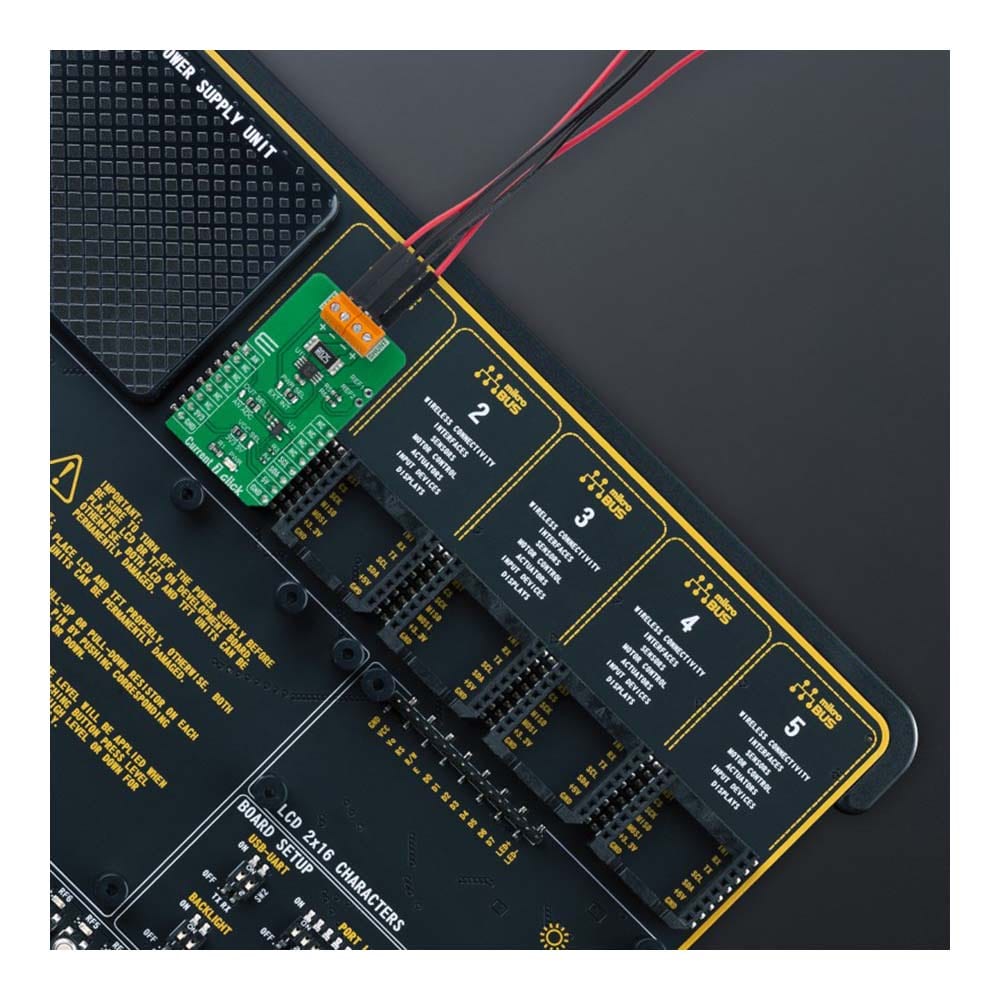
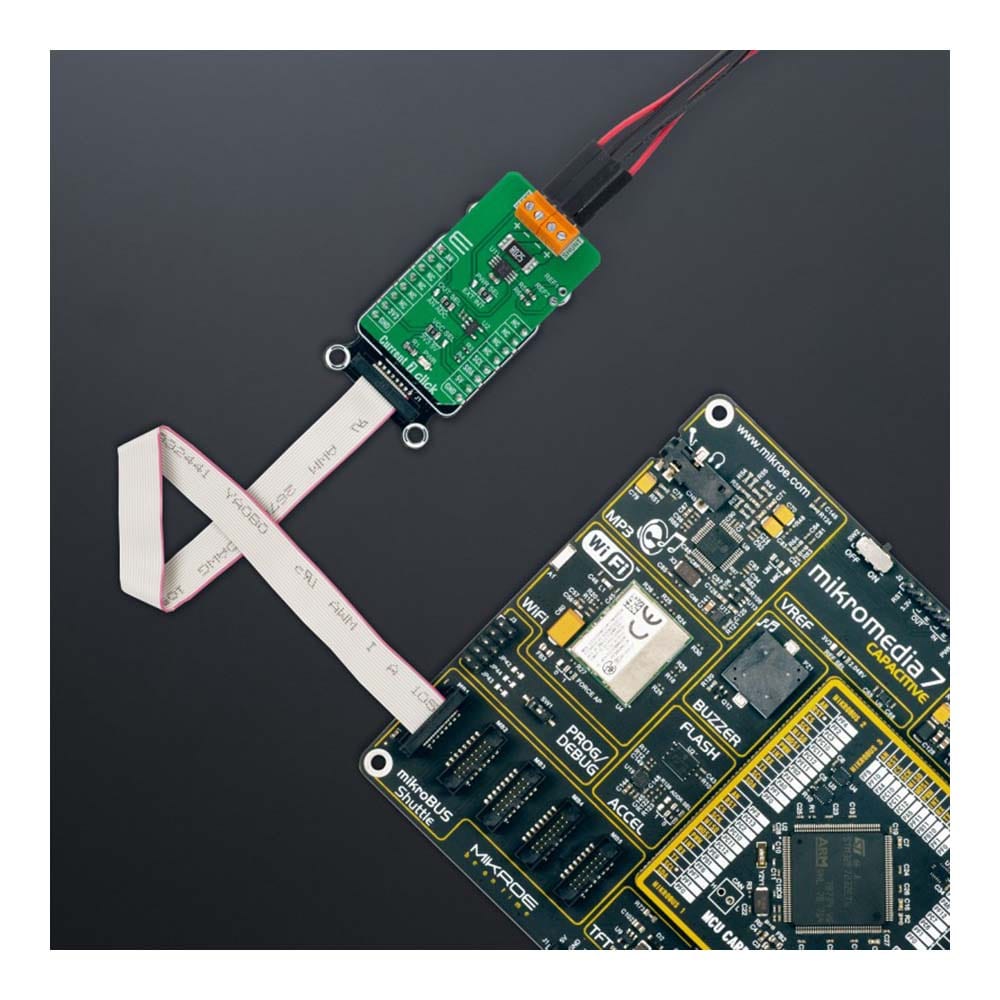
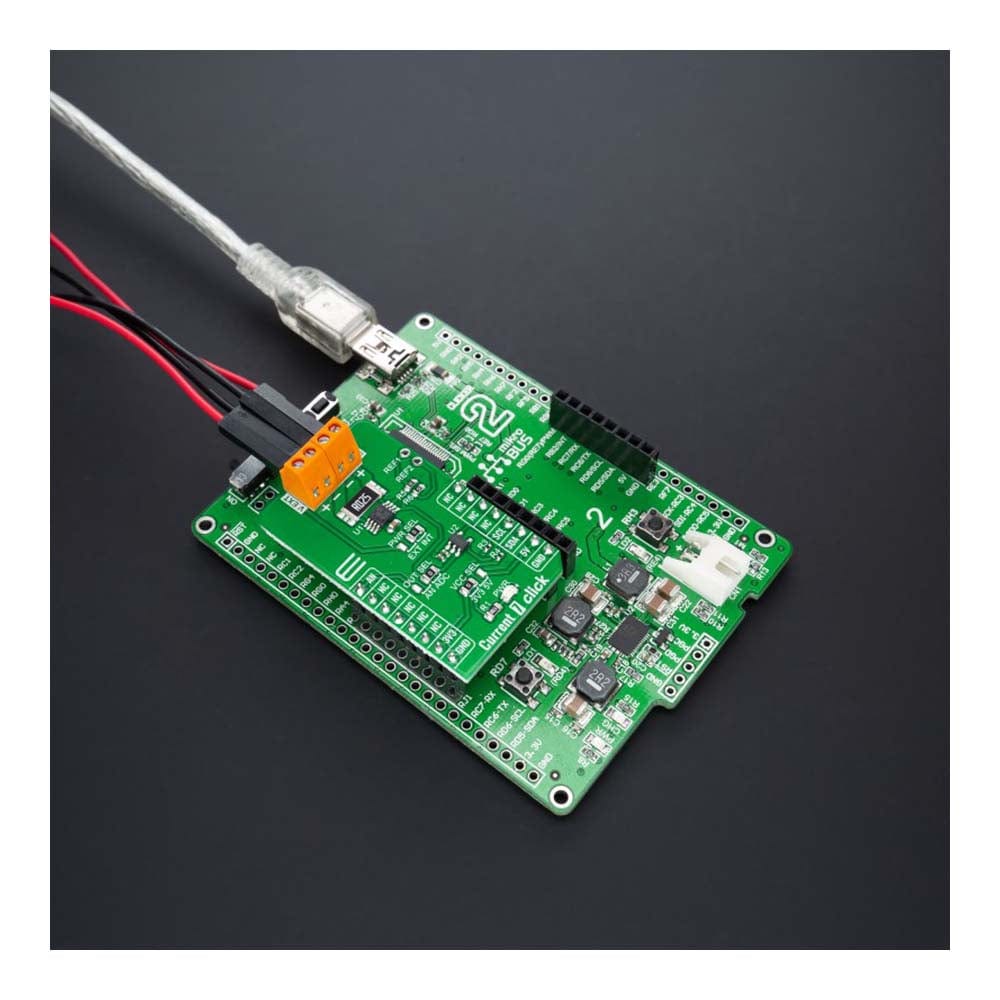
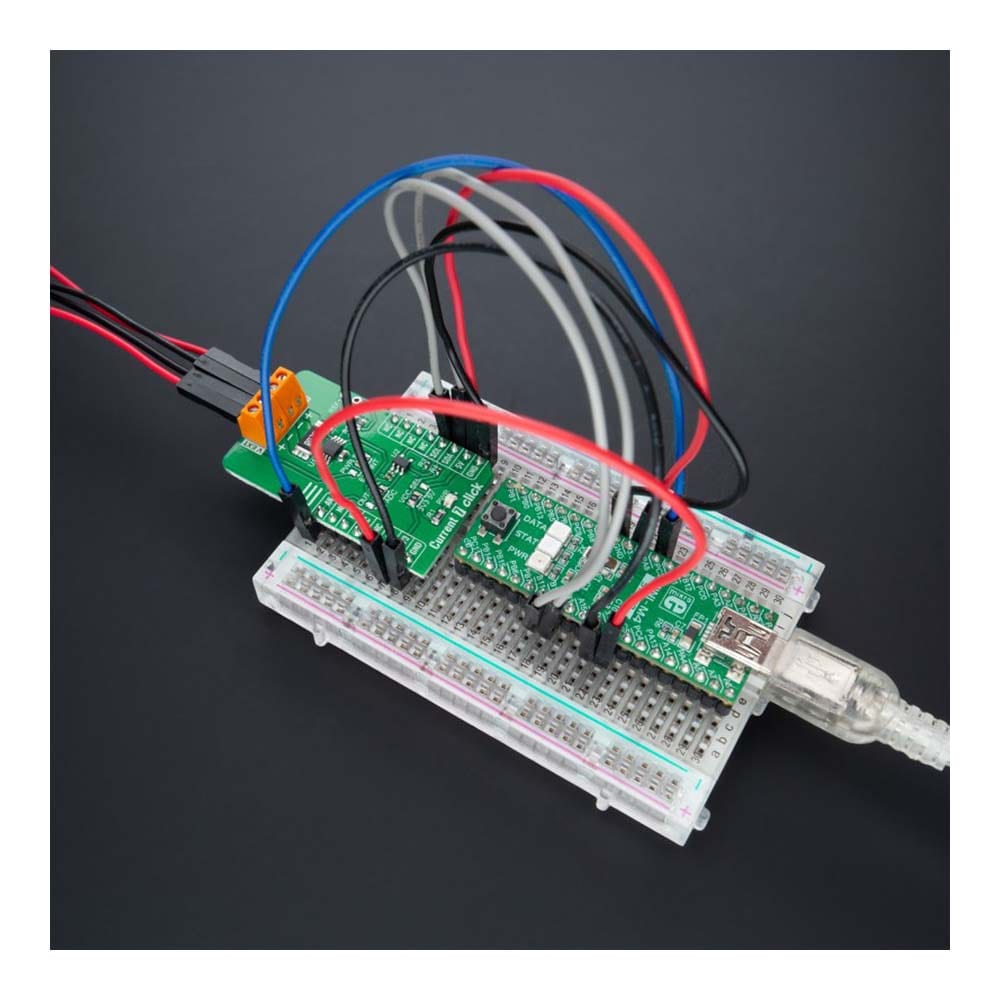
Overview
The Current 7 Click Board™ is a compact add-on board providing a precise and accurate current sensing solution. This board features the INA282, a wide common-mode range, bidirectional, high-accuracy current shunt monitor from Texas Instruments. The INA282 represents a voltage output current shunt monitor that can sense drops across shunts at common-mode voltages from –14 V to +80 V, independent of the supply voltage, which operates in a range from 2.7V up to 18V supply. The zero-drift topology enables high-precision measurements with maximum input offset voltages as low as 70μV. Also, the user is allowed to process the output signal in analog or digital form. This Click board™ delivers higher performance to industrial control and automation applications, load and power supplies monitoring, telecom equipment, and many more.
The Current 7 Click Board™ is supported by a mikroSDK compliant library, which includes functions that simplify software development. This Click board™ comes as a fully tested product, ready to be used on a system equipped with the mikroBUS™ socket.
Downloads
La carte Click Board™ Current 7 est une carte complémentaire compacte offrant une solution de détection de courant précise et exacte. Cette carte est équipée de l'INA282, un moniteur de shunt de courant bidirectionnel à large plage de mode commun et de haute précision de Texas Instruments. L'INA282 représente un moniteur de shunt de courant de sortie de tension qui peut détecter les chutes sur les shunts à des tensions de mode commun de -14 V à +80 V, indépendamment de la tension d'alimentation, qui fonctionne dans une plage de 2,7 V à 18 V. La topologie à dérive nulle permet des mesures de haute précision avec des tensions de décalage d'entrée maximales aussi basses que 70 μV. De plus, l'utilisateur est autorisé à traiter le signal de sortie sous forme analogique ou numérique. Cette carte Click™ offre des performances supérieures aux applications de contrôle et d'automatisation industrielles, à la surveillance des charges et des alimentations, aux équipements de télécommunications et bien d'autres encore.
La carte Click Board Current 7™ est prise en charge par une bibliothèque compatible mikroSDK, qui comprend des fonctions qui simplifient le développement logiciel. Cette carte Click Board™ est livrée sous la forme d'un produit entièrement testé, prêt à être utilisé sur un système équipé du socket mikroBUS™.
| General Information | |
|---|---|
Part Number (SKU) |
MIKROE-4976
|
Manufacturer |
|
| Physical and Mechanical | |
Weight |
0.02 kg
|
| Other | |
Country of Origin |
|
HS Code Customs Tariff code
|
|
EAN |
8606027389283
|
Warranty |
|
Frequently Asked Questions
Have a Question?
Be the first to ask a question about this.

